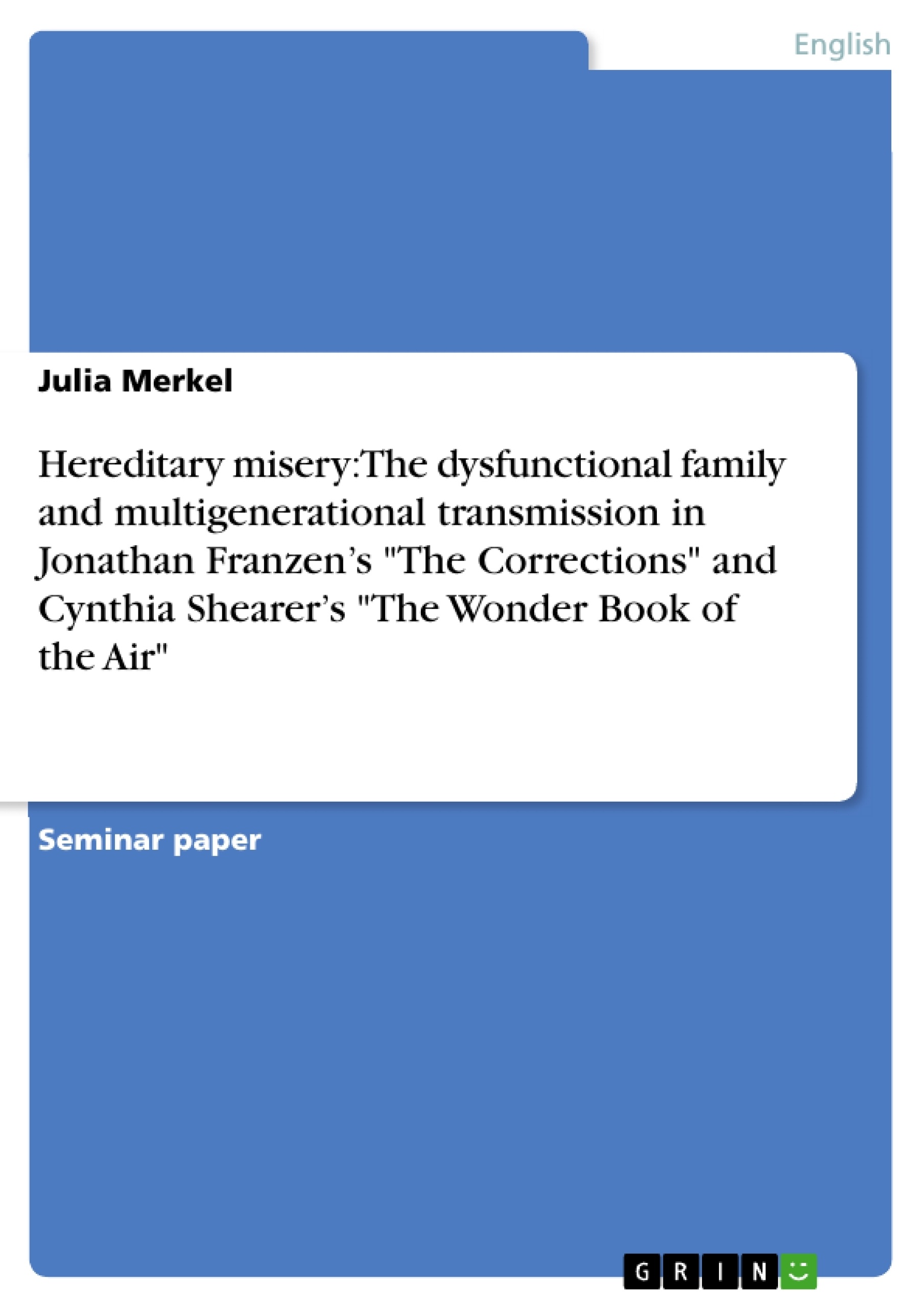In times of the decline of the family as a social parameter we witness an unquestionable popularity of the family novel in American literature. Are authors writing desperately against the unraveling nuclear family, against patchwork constellations and second and third marriages? Is this merely nostalgic reminiscence, a longing for the long lost? In my paper I will argue that the portrayal of the family in Jonathan Franzen’s The Corrections and Cynthia Shearer’s The Wonder Book of the Air is a rigid dissection of the pathological cycle of dysfunction, family often produces. It leaves every generation with the burden of the latter’s failures and a lifelong struggle against reproducing revictimization
Inhaltsverzeichnis (Table of Contents)
- Introduction: Inescapable Revictimization?
- The American Family
- Ideal and Idealization
- Dysfunction
- Jonathan Franzen's The Corrections
- Family Structure and Christmas
- Dysfunction and Revictimization
- Helpless Attempts of Corrections
- Cynthia Shearer's The Wonder Book of the Air
- Dysfunctional Family and Family Patterns
- Marriage and Love
- Genealogy and Revictimization
- Conclusion: Family as Simultaneous Stability and Curse
Zielsetzung und Themenschwerpunkte (Objectives and Key Themes)
This paper aims to analyze the portrayal of family dysfunction and the cycle of multigenerational transmission in Jonathan Franzen’s The Corrections and Cynthia Shearer’s The Wonder Book of the Air. It argues that these novels, while seemingly disparate in style and setting, offer a critical look at the enduring influence of past family dynamics on present-day individuals and families, highlighting the painful cycle of revictimization.
- The idealized American family and its contrasting reality.
- Multigenerational transmission of dysfunction and its impact on family members.
- The role of communication and its absence in perpetuating unhealthy patterns.
- The complex interplay between family as a source of both stability and misery.
- The enduring presence of the family as a central theme in contemporary American literature.
Zusammenfassung der Kapitel (Chapter Summaries)
The introduction explores the resurgence of the family novel in American literature, arguing that this trend reflects the ongoing relevance and complexity of family dynamics in contemporary society. The paper establishes the concept of multigenerational transmission, emphasizing the involuntary and subconscious ways in which past family patterns are repeated in subsequent generations.
Chapter 1 examines the idealized American family, tracing its roots in social codes, religious values, and the perception of the family as a natural unit. The chapter explores the traditional division of roles, with the father as the head of the household and the mother primarily responsible for home and children. It highlights the limitations of this idealized model, particularly in its portrayal of the mother as a figure devoid of individual needs or aspirations.
Chapter 2 delves into the dysfunctional family dynamics within The Corrections, focusing on the Lambert family's struggles with communication, unmet expectations, and the legacy of past traumas. The chapter explores the ways in which the characters perpetuate unhealthy patterns, leading to a cycle of revictimization. It also examines the role of holidays, particularly Christmas, in Enid Lambert's attempts to forge a sense of family unity.
Chapter 3 examines the Durrance family in The Wonder Book of the Air, highlighting their own intricate history of dysfunction and the impact of past generations on their present lives. The chapter analyzes the family’s complex relationship with love, marriage, and the generational transmission of misery.
Schlüsselwörter (Keywords)
The key terms and concepts that define this analysis include the American family ideal, dysfunction, multigenerational transmission, revictimization, family structures, communication, and the portrayal of family dynamics in contemporary American literature. It examines the concepts of family as both a source of stability and a catalyst for misery, ultimately offering a nuanced understanding of the complex and enduring power of family relationships in shaping individual lives and society.
- Quote paper
- Julia Merkel (Author), 2007, Hereditary misery: The dysfunctional family and multigenerational transmission in Jonathan Franzen’s "The Corrections" and Cynthia Shearer’s "The Wonder Book of the Air", Munich, GRIN Verlag, https://www.grin.com/document/76384



